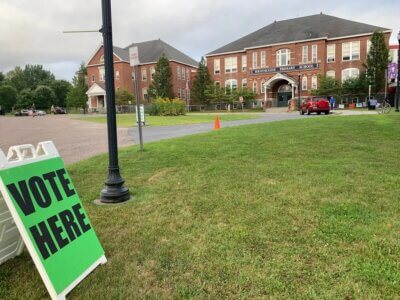Resources available for weatherization—save money and stay cozy
2020: the year of the home, when we were asked to stay in as part of a massive group effort to keep the coronavirus out. Our homes have come to mean more to us than ever before, and in the process, we’ve gotten to know them better. We know where to find the coziest spot, but also the drafty ones, the leaky windows, and where the condensation collects.
 As we step into a long winter at home, heating needs and maintaining a healthy and comfortable indoor environment are likely top of mind, and their associated costs may feel daunting. This is especially true for lower-income households who generally use less energy than their higher-income neighbors but are saddled with a higher energy burden, which is the amount spent on energy as a percentage of household income.
As we step into a long winter at home, heating needs and maintaining a healthy and comfortable indoor environment are likely top of mind, and their associated costs may feel daunting. This is especially true for lower-income households who generally use less energy than their higher-income neighbors but are saddled with a higher energy burden, which is the amount spent on energy as a percentage of household income.
The burden for lower-income families can be three times that of those with higher incomes. When up to a fifth of household income is needed to cover energy costs, life quickly spirals into deeper hardships, including additional health challenges. Compared to other New England states, Vermont has a particularly high energy burden.
Vermont also holds the dubious distinction of having the second-oldest housing stock in the country. Old can mean charming 200-year-old farmhouses, but it can also mean cold, drafty, inefficient and expensive to occupy.
Weatherizing, or buttoning up our houses (regardless of when they were constructed), is the most effective way to address indoor comfort, the high cost of heating and energy burden all at the same time. When fuel use is reduced, pollution and greenhouse gas emissions are as well. Still another benefit is that savings from not purchasing imported oil and gas can stay in Vermont to support our local economy.
A common hurdle is the up-front cost, which can be considerable and therefore can seem prohibitive. A comprehensive weatherization project often costs $10,000 and up, depending on the size and condition of the home. There are several options to help chip away at the initial costs, starting with a free evaluation. As part of this year’s Button Up campaign, all Vermonters are eligible for a free virtual energy visit (A full energy audit can cost upwards of $500). These are one-on-one appointments with an energy expert either by phone or video chat who will help identify where energy is being wasted and suggest easy ways to button up your home. You can sign up by filling out this online form by Dec. 30.
Weatherization books and resources, including diagnostic tools such as a thermal camera and a kill-a-watt electricity use monitor, can be borrowed from the conservation corner at the town library.
Concerned about the disproportionate burden some of our neighbors are carrying, the town energy committee has also provided $1,000 worth of materials for easy DIY weatherization projects to the energy shelf at the Food Shelf. Following an energy visit, lower-income Charlotters will receive a customized kit of materials needed to complete suggested projects in their homes.
Anyone who completes at least three DIY weatherization projects, such as air sealing, weather-stripping or adding insulation, can receive $100 cash back. You can find details here.
If you’re inspired to take on a larger project, such as installing a cold climate heat pump, a wood or pellet stove, energy efficient appliances, or LED fixtures, make sure to take advantage of the savings on this long list of rebates. Financial support is also available through no- and low-interest home energy loans, offered through Efficiency Vermont and VSECU.
The Energy Committee encourages learning more about this year’s Button Up program by signing up for a free energy visit, and taking advantage of the currently available financial incentives to invest in coziness, cost savings and the climate all at the same time.
Related Stories
Popular Stories
If you enjoy The Charlotte News, please consider making a donation. Your gift will help us produce more stories like this. The majority of our budget comes from charitable contributions. Your gift helps sustain The Charlotte News, keeping it a free service for everyone in town. Thank you.
Andrew Zehner, Board Chair






